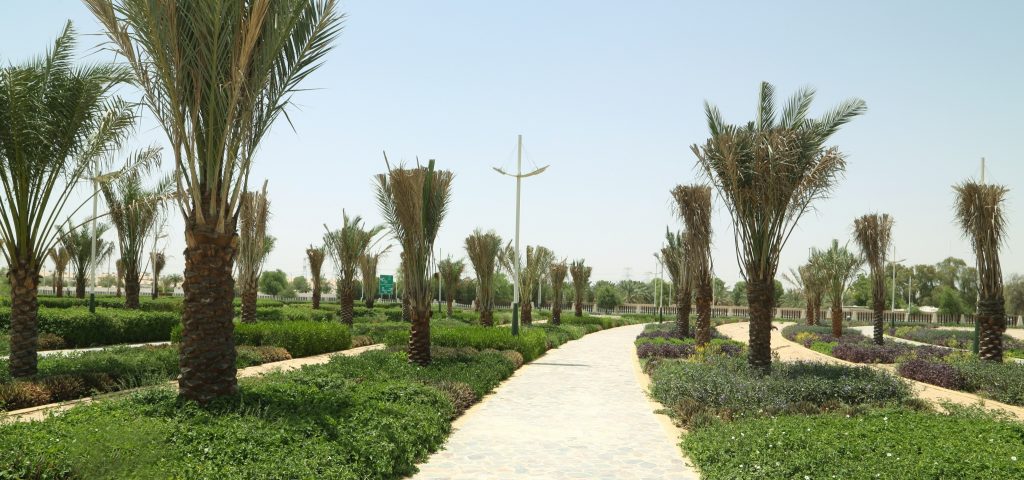Sustainability has become one of the cornerstones of Dubais landscape architecture development and urban planning vision. Done correctly, landscape design has the ability to moderate extreme heat, recycle water, reduce energy use, lower carbon emissions, and attract people to urban areas.
In the wake of Dubai’s 2020 vision, the municipality had earmarked AED 6bn ($1.63bn) to develop a further 12,000 hectares of urban greenery, including nine public parks at a cost of AED 77mn to revamp the emirate into a green paradise in its preparation drive for the Expo.
One such project is the recently completed Palm Oasis Park in Dubai, previously Al Nakheel Park, a AED 24mn project incorporating artificial lakes, a cafeteria, playgrounds for children, and a pergola with a Barasti among other things.
In addition, the Palm Oasis Park brings together 39 varieties of date palm trees, carefully gathered from all the seven Emirates to be housed in one park, as well as 60 varieties of ornamental trees and shrubs. Air temperatures can be approximately 20 degrees cooler beneath tree canopies than in surrounding areas – a relief for Dubai residents especially at this time while various species of trees can also help improve air quality by removing dust and other particulates, as well as absorbing carbon dioxide.
A further feature is the installation of over 200 solar lights to illuminate the 7.5 hectare park after dark, making it the first project of its kind in Dubai to depend entirely on solar energy.
Challenges
Developing a sustainable park is not without its challenges in a region where water is scarce and the heat rises to such searing levels, explains Adnan Nalwala, Executive Director, Akar Technical Services and Natural Stone. Capturing, cleaning and recycling water is therefore probably the biggest challenge to be addressed followed by planting because they help to absorb and clean water as well as to reduce dust and purify the air.
Sorting out the irrigation needs for these trees required a lot of planning and technological expertise to successfully translate sustainable landscaping ideas from the drawing board into reality, with minimal effort and expense, says Nalwala. “In addition, irrigating an entire soft landscape from an underground tank buried in soil with special protection was another challenge and we succeeded by mobilizing 100T crane and 28 shovels (966) at a time. So that installation and back filling were done in tandem. It took approximately six to seven months of planning to completely sort out the water and planting issues but only two months to execute these plans.
He stresses that people use open space in the Middle East very differently to how they would use it in India or Europe. The climatic conditions play a significant role in the conceptualisation of any urban development.
But its not only the climate that differentiates landscaping challenges in the Middle East from those presented elsewhere, Nalwala says. Cultural values are an integral part of the designing and landscaping process. If you dont really understand peoples cultural values, youll get it wrong. The use of colours is very specific to cultures and what they mean, the shapes and forms of architecture, etc.
How one translates these ideas is actually more important than the technology deployed. The technologies have a function to perform, and dont actually create value for a space. And if people wont value it, then it will be wasted and neglected.
However he says innovation in the landscaping industry across Dubai has managed to dispel the myth that using sustainable solutions comes at a high price, Adnan says.
Today, government institutions wholeheartedly recognise that the initial costs are minimal whereas the annual returns are huge. In light of diminishing natural resources and rising consumption, the world is moving towards an era of smarter technology and launching horticultural and green projects are no longer considered fashion statements but more as an imperative, he says.
For example a lot more clients have become more accepting of LED lighting, because they know that although the initial cost is more expensive than a halogen bulb, it will last for 10 years, whereas a halogen will pop in 2 years. So while LED bulbs are more expensive, in the long run, its environmentally safer and saves them energy.

